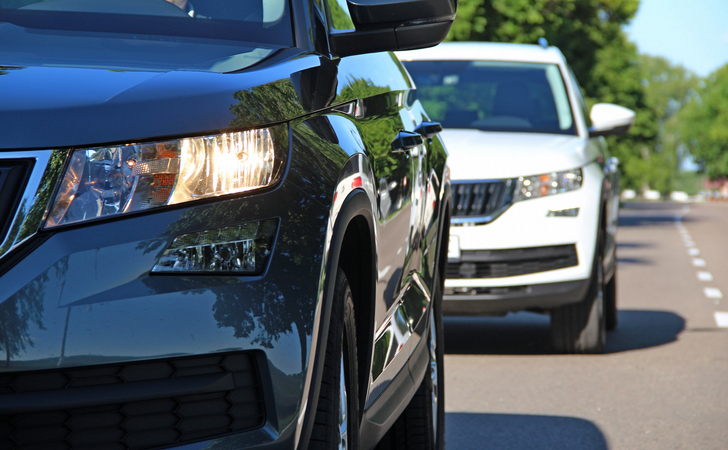Despite many advances in auto safety, the majority of car accidents are caused by human error. According to one study, 99 percent of all car crashes are caused by driver behavior.
Technology can only do so much to prevent serious crashes. When you’re on the road, you can stay safer by paying close attention to the motorists around you. As an accident attorney in Philadelphia, here are the six types of dangerous drivers to keep an eye on.
Rubberneckers
We’ve all been there: You see an accident and look at the side of the road to see what happened. It’s human nature to be curious. However, slowing down to stare at an accident can put everyone around you in danger.
If you see a crash, try to pay more attention to the drivers around you. You’ll probably notice that they start driving somewhat erratically. People also usually slow down as they pass an accident. If you don’t pay close attention to the cars around you, you could get involved in a serious accident.
Tired Drivers
The Centers for Disease Control and Prevention (CDC) reports that 1 out of 3 Americans doesn’t get enough sleep. This statistic proves there are plenty of fatigued drivers on the roads. The risk of being involved in a crash with a fatigued driver also increases at nighttime.
While you can’t always tell when someone is sleepy behind the wheel, you can watch closely to make sure the motorists around you are driving safely. Look for erratic movements, including swerving in and out of lanes or driving too close to the side of the road. These can be signs a driver is too tired to operate their car safely.
Aggressive Drivers
Road rage is a growing problem on the roads. People are in a hurry, and they don’t always stay calm behind the wheel. The best thing to do when you encounter an aggressive driver is to keep your distance.
It’s typically not in your best interest to engage with aggressive drivers, as this can only make their behavior worse. Slow down or change lanes if another motorist starts to drive in a way that makes you feel unsafe.
If an angry motorist follows you or tries to push you off the road with your vehicle, experts advise you to call the police or drive to the closest police station to get help. It’s never safe to stop your car and confront the other driver.
Teen Drivers
Young people have a high car accident rate, according to the CDC. In 2015 alone, over 2,000 teen drivers between the ages of 16 and 19 were killed in accidents, and another 235,000 were treated in emergency rooms for injuries sustained in car crashes.
Parents can do a lot to help their teenagers drive safely. Even as teens, children tend to model their behavior after that of their parents. As a parent, be a positive role model for your teen when it comes to behavior behind the wheel. This means putting your cell phone down and driving the speed limit.
Statistics also show that teens are more likely to be involved in a car accident if they drive with a lot of passengers in their car. You can reduce your teen’s risk of being involved in a crash by limiting the number of people they can take in their vehicle. The more passengers inside, the higher the risk of an accident.
Drunk Drivers
Each day in the United States, about 29 people are killed in drunk driving crashes. In 2016, one person every 50 minutes died in a drunk driving related accident. Even a single drink can be enough to put someone over the legal limit and to cause them to drive unsafely. As a motorist, keep your distance from other cars if you observe them swerving or operating in a manner that could indicate the driver is intoxicated.
Drivers on Cell Phones
It’s a habit most people have done at least once while driving. However common it might be, talking or texting while you drive can put you at serious risk of being involved in a car accident. If you see someone talking on his or her phone, pay close attention as you drive around them. It only takes a few seconds’ distractions to cause an accident.
It’s also dangerous to do other activities behind the wheel. These dangerous activities include eating, reading, shaving, and applying makeup. While it might be tempting to multitask on your morning or evening commute, driving is something that requires your total attention. It’s never safe to send a text or eat a burger while you drive. Experts say it’s also dangerous to talk to a passenger as you drive if the conversation takes your attention away from the road.
If you've been injured in a car accident, it's important to discuss your legal options with an experienced auto accident attorney. Attorney Rand Spear will fight to get you the medical care you need and the financial compensation you deserve.
Media Contact:
Philadelphia Car Accident Attorney Rand Spear
(T): 215-985-2424
phillyinjuryaccidents.submitmypressrelease.com
Sources:
- http://cyberlaw.stanford.edu/blog/2013/12/human-error-cause-vehicle-crashes
- https://www.cdc.gov/media/releases/2016/p0215-enough-sleep.html
- https://www.cdc.gov/motorvehiclesafety/teen_drivers/teendrivers_factsheet.html
- https://www.nhtsa.gov/risky-driving/drunk-driving
***ATTORNEY ADVERTISING***
Prior results cannot and do not guarantee or predict a similar outcome with respect to any future case. Recoveries always depend upon the facts and circumstances of each case, the injuries suffered, damages incurred, and the responsibility of those involved. This article is not to be considered advise, only the execution of the contingency agreement with this law firm will constitute an attorney-client relationship. The contents of this article are for general information only. If you would like to pursue a claim, please contact an attorney immediately to discuss your specific facts and circumstances regarding your claim. Some cases accepted by this law firm may be referred to or worked on by other lawyers, depending on the area of practice and specifics of a particular case.
Source: SubmitMyPR
Release ID: 12212

